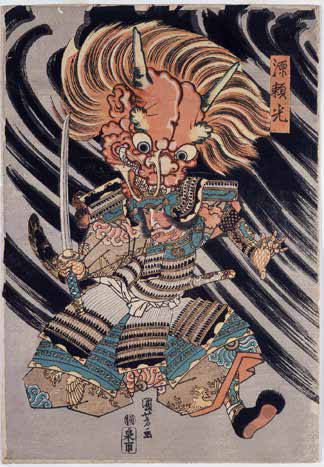
MIXING TURTLES WITH TRADITION
John P. Stapleton
Cartoons, illustrations, and their history are important
to Springfield Museums. From various exhibits to their gift
shop and their sculpture garden, hometown hero Dr. Seuss is
always present. But for their new exhibit, “Turtle Power,” they
delve into this subject from a new, yet still local, direction:
The Teenage Mutant Ninja Turtles (TMNT) and the Japanese
warriors that inspire them.
“The goal of the exhibit is to bring together a pop culture
icon with ancient objects and imagery that informed this
phenomenon,” exhibit curator Julia Courtney said. “In short,
the exhibit demonstrates how ancient culture informs pop
culture and provides a context for both.”
When you walk into the room, you’re met with four long
banners, each with a representation of the Turtles from the
original 1980s comics by Northampton artists Kevin Eastman
and Peter Laird. All of the Turtles have their red masks on,
but the border of each banner, and the accompanying cases
that were made specifically for this exhibit, show off the color
that was later given to each of the turtles. Blue for Leonardo,
purple for Donatello, red for Raphael, and orange for Michelangelo.
The tall rectangular cases hold ancient Japanese artwork,
weaponry and armor from the George Walter Vincent Smith
Museum’s own world-renowned collection. What makes this
exhibit an educational experience is that there are two histories
at work here. One investigates the origins and depictions
of the Turtles, and the other shows the history of the ninja
and the samurai, both of these coming together to provide
context for one another. In the Turtles’ case, we find out
where everything that makes them ninjas comes from, and
for the warrior history itself, we get a more modern sense of how that culture worked, which is what the Teenage Mutant
Ninja Turtles has been doing for kids since its origin.
To read more, pick up a
copy of our latest issue! Click here to find a pick-up location near you or Subscribe Here.